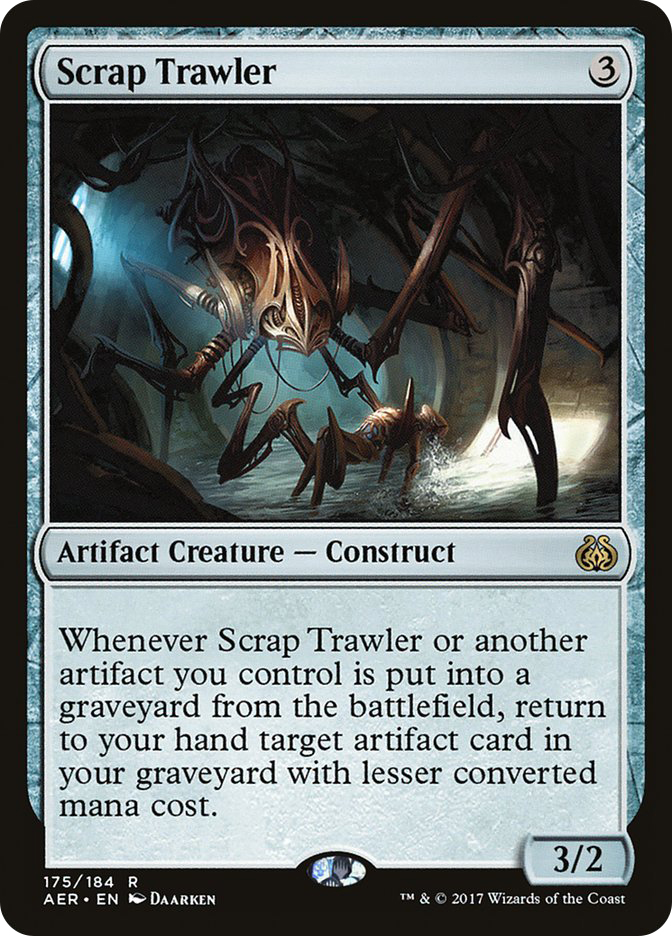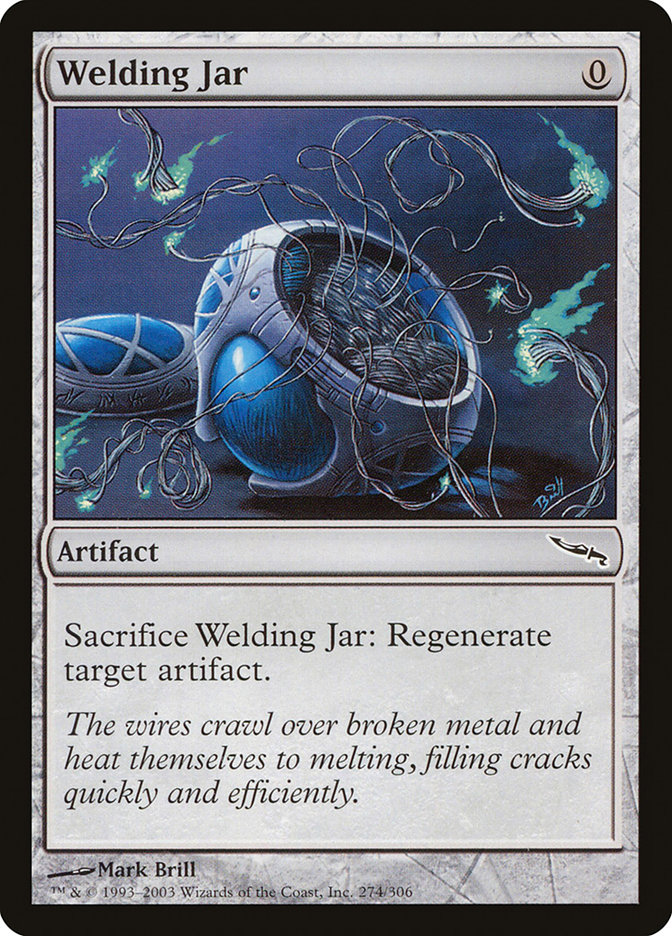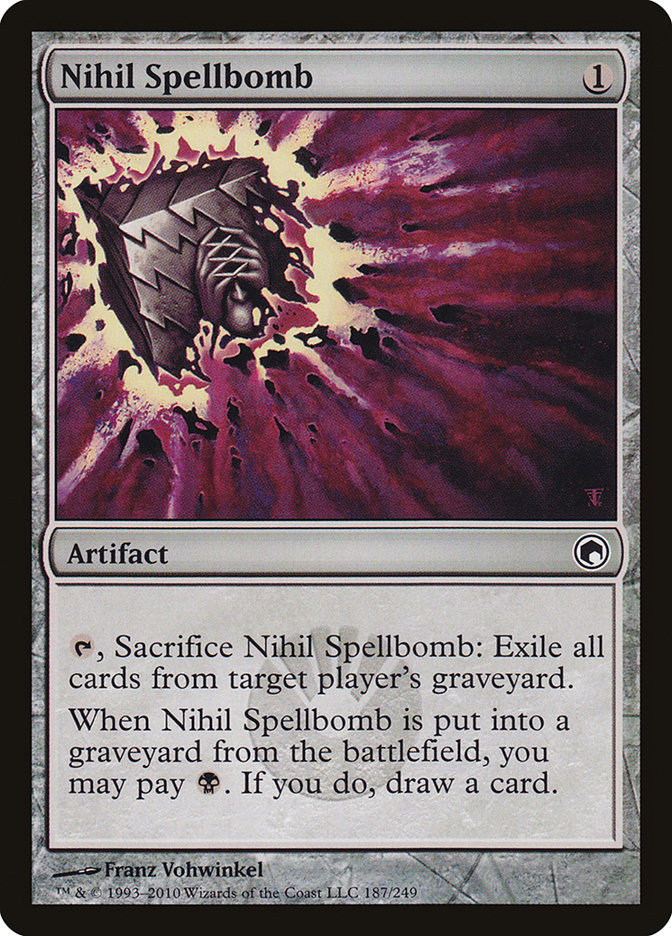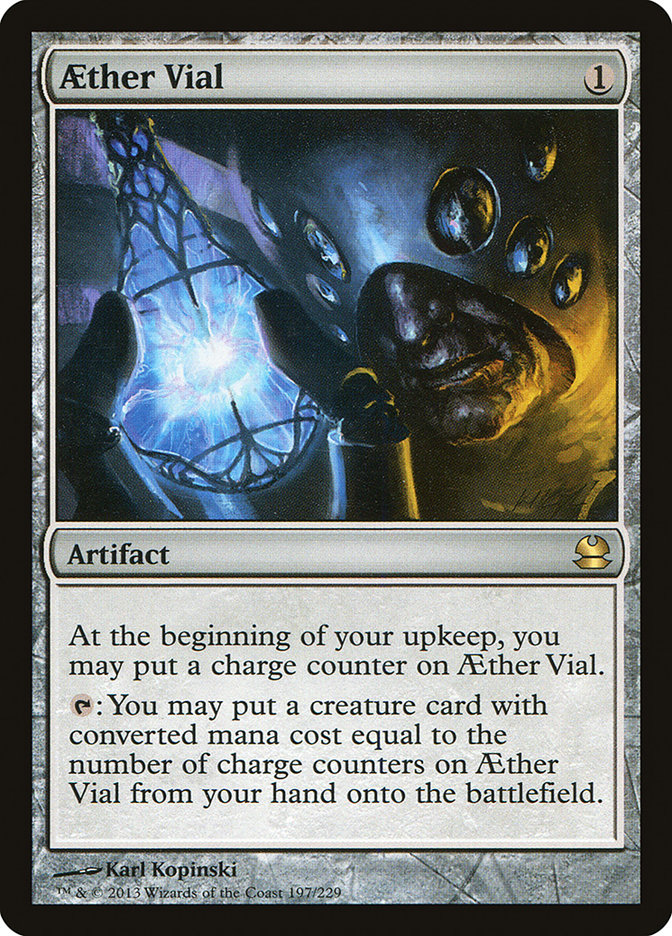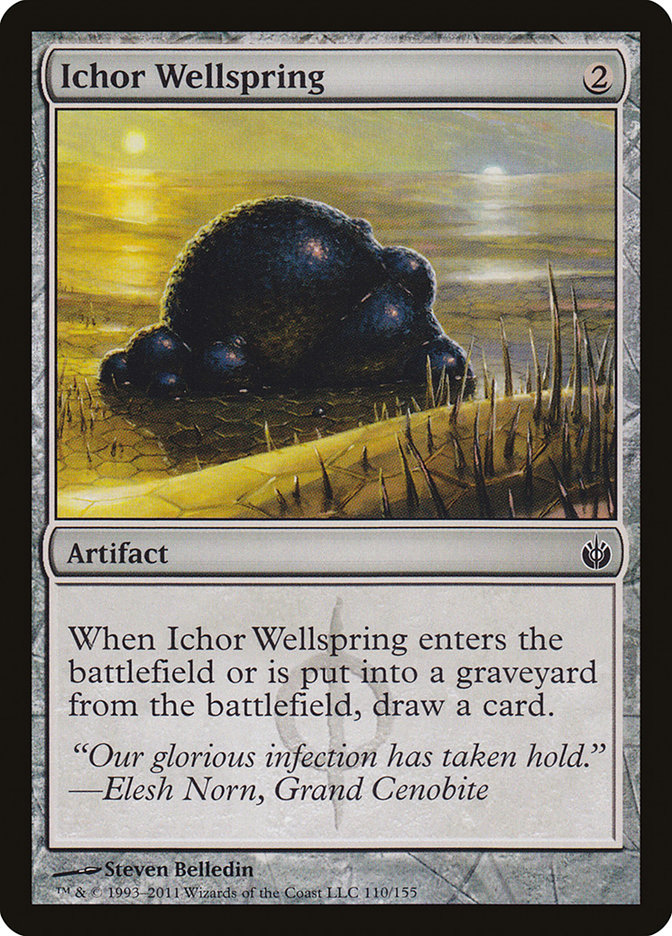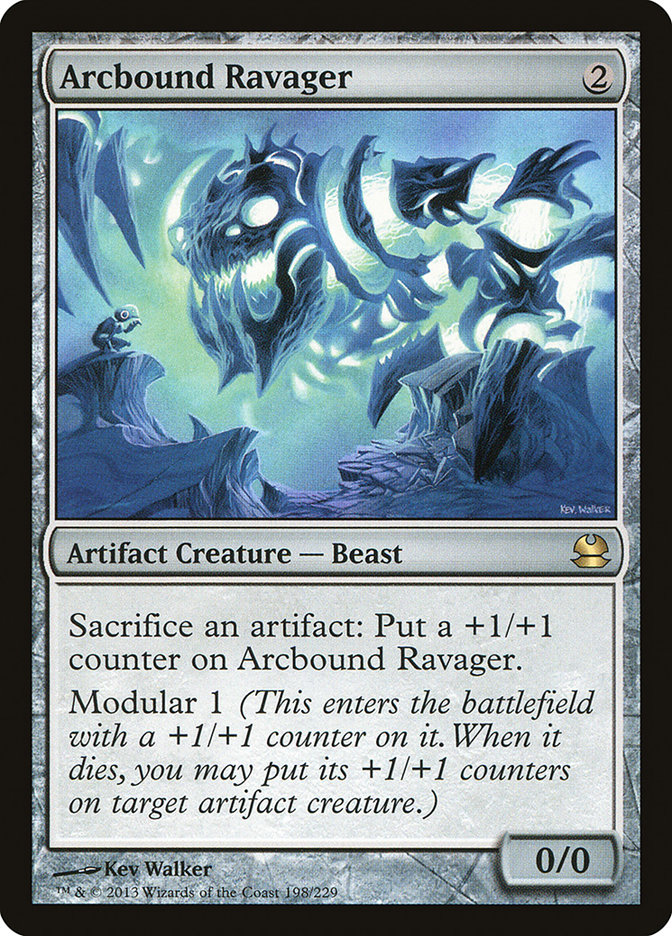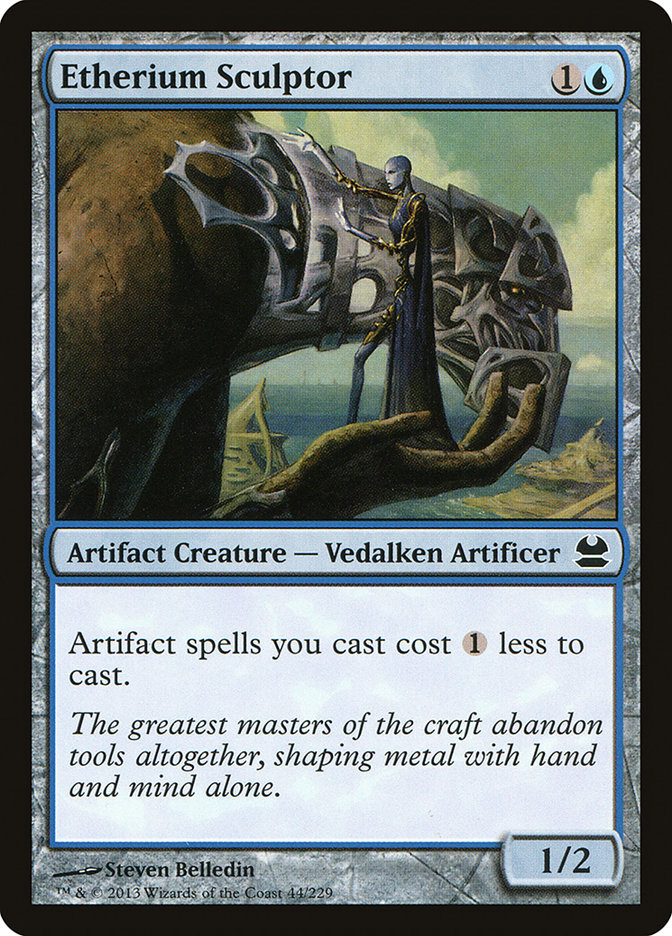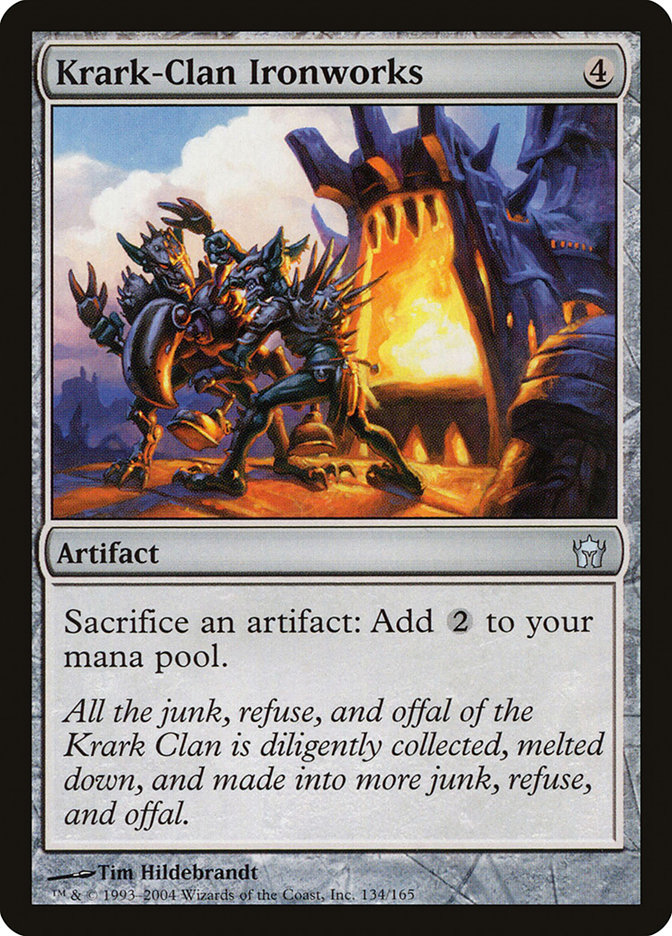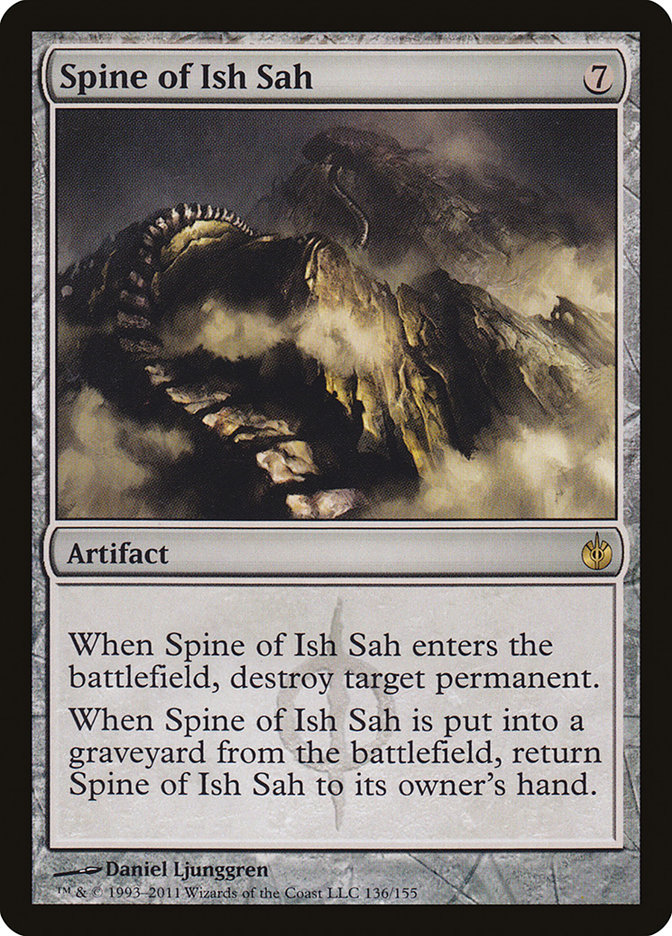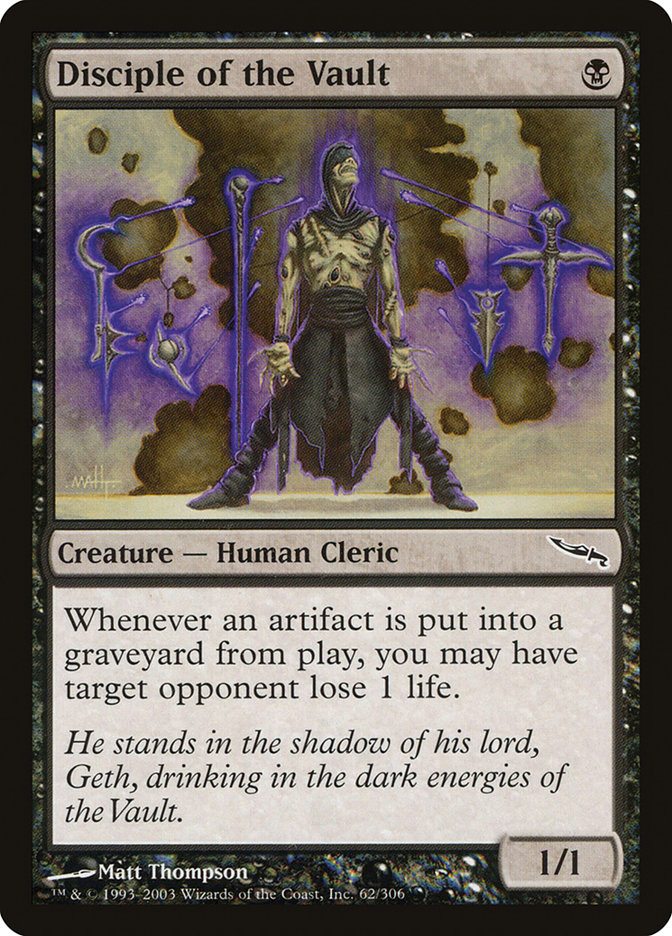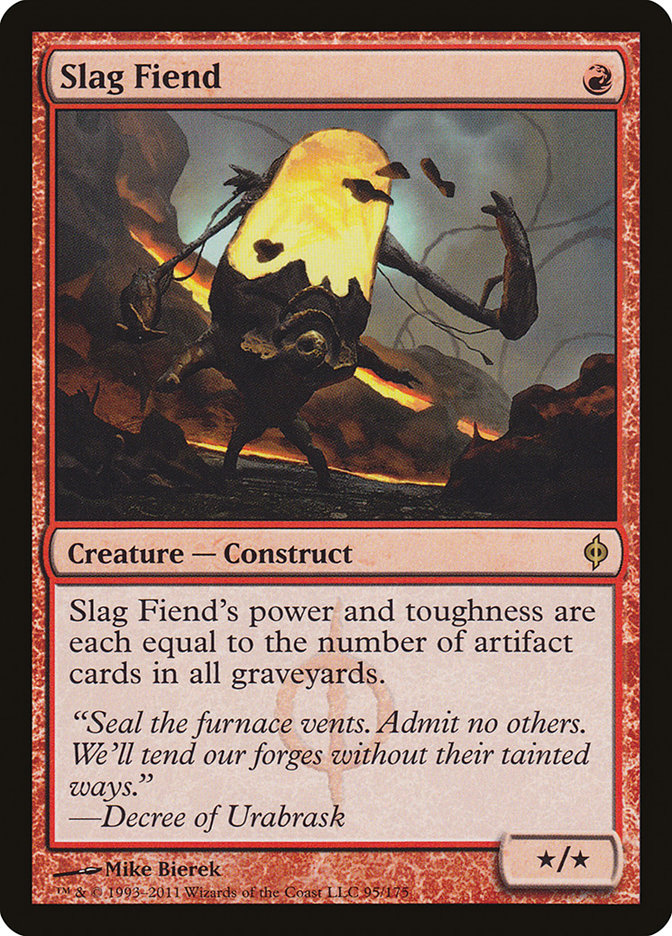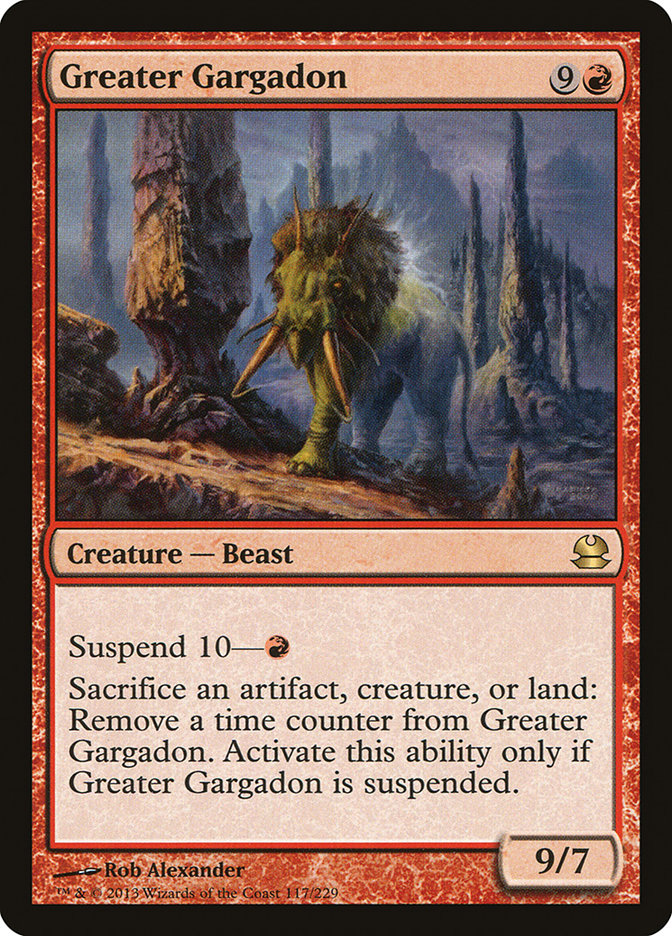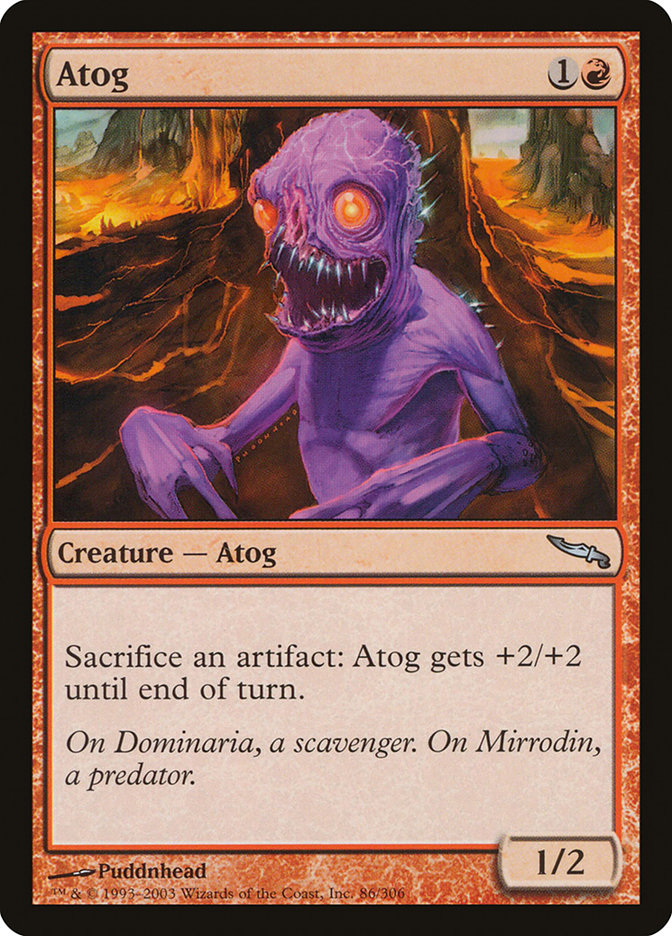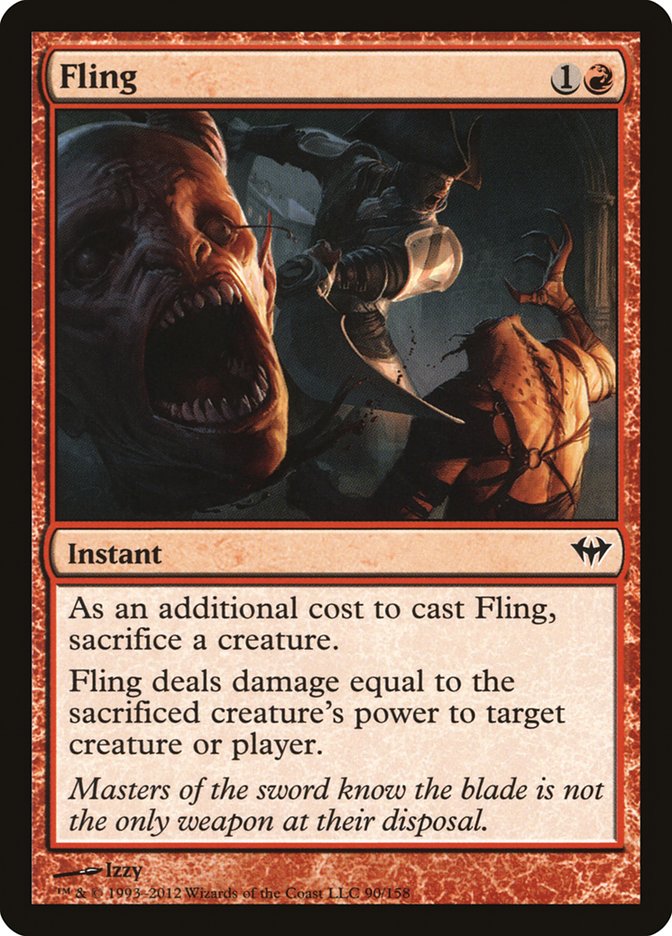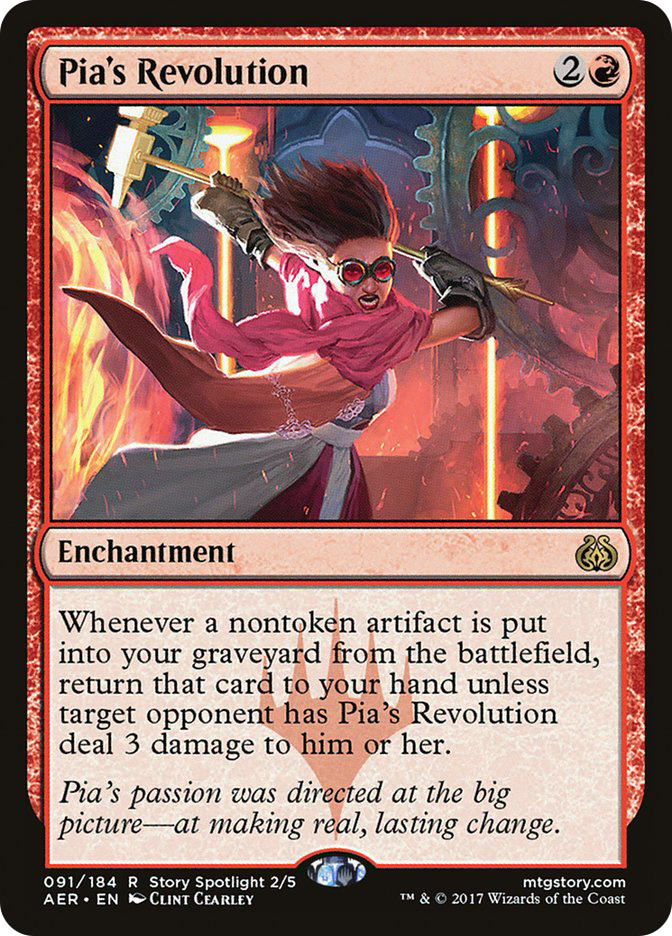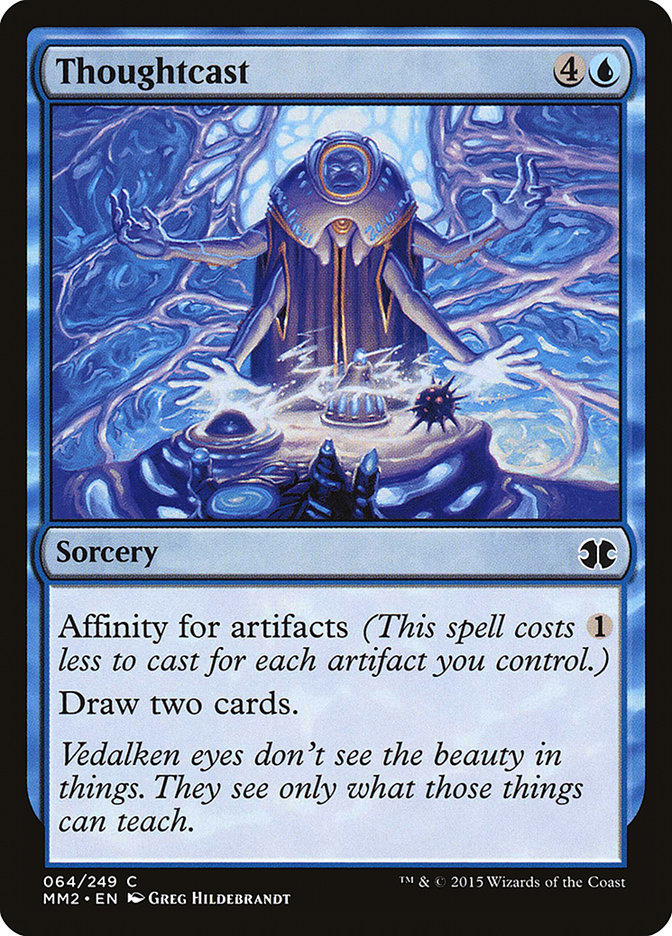Scrap Trawler is a very powerful Modern card. The interaction between Scrap Trawler, Mishra’s Bauble, and Chromatic Sphere / Chromatic Star is a fantastic starting point, but there’s potentially a lot more going on than that. Today, I want to look at a few different ways to use this card.
The absolutely essential core in playing with Scrap Trawler is as follows:
This core makes it very likely that you’ll be able to generate a good amount of value whenever you can resolve Scrap Trawler, but there are a lot of things you can do to make it more consistent and powerful. Let’s start by looking at the other most relevant artifacts.
More Artifact Options
Zero Mana:
Welding Jar is generally a sideboard card because it’s only really good when the opponent has artifact removal in their deck, but if you have enough creatures, it might be worth playing maindeck. At the very least, you do have Scrap Trawler to protect.
If you’re looking to sacrifice artifacts, this can give you a lot of them to sacrifice. Also, it’s a fairly annoying threat against a lot of midrange and control decks (mostly those that aren’t white), and returning it against decks that are bad against 1/1 fliers can easily be game-breaking.
Similar to Hangarback Walker, but better against creatures and worse against removal. Has the advantage that it can sacrifice itself, increasing the odds that it will function as a zero-mana artifact for you to return.
One Mana:
This card’s pretty bad. Entering the battlefield tapped is a big drawback, as is needing two mana to activate it, but drawing a card when you sacrifice it to something else can be a pretty big deal, and we’re very much in the market for one-mana artifacts that can sacrifice themselves.
This is a one-mana artifact that can sacrifice itself even if you have no mana available, unlike the Chromatic artifacts, which is important if you want to tap out for Scrap Trawler and be sure you can get back one of the creatures with casting cost XX. It costs a mana to get a card from it, unlike the others, but you can do that even if you sacrifice it to something else, and graveyard hate is very welcome in Modern.
If you build a particularly creature-focused version of this deck, this is an interesting option. Deploying Scrap Trawler at instant speed for no mana and protecting it from counterspells can be great. This card was played in Affinity in the distant past, but it was replaced by Springleaf Drum when all the creatures cost zero. If the creatures in your deck cost one to three instead of zero, this card is probably better.
Two Mana:
This card is fantastic with Scrap Trawler if you’ll consistently have a way to sacrifice it, since it draws two cards and returns a one-mana artifact, which can then return a zero-mana artifact. For some aggressive builds, this might be too clunky, but it’s among the best cards if you’re playing Krark-Clan Ironworks.
This is the best and cheapest artifact that allows you to profitably sacrifice other artifacts, and it plays very well with Hangarback Walker and Walking Ballista, which make good use of the extra +1/+1 counters.
This is a low-impact card by itself that’s fairly vulnerable to removal, but if you’re drawing a lot of extra cards, this can save a ton of mana, making it much easier to “go off” with Scrap Trawler.
Four Mana:
If you play this, you probably want to plan to use it to win the game by casting something huge. Emrakul, the Aeons Torn is the traditional option, but I’m not sure it’s the best.
Seven Mana:
I think this might be a better finisher than Emrakul for an Ironworks build. If you get to seven mana and cast this, you destroy your opponent’s permanent. Then you sacrifice it to Krark-Clan Ironworks to return it to your hand and return Ichor Wellspring to your hand with Scrap Trawler. Use the two mana to cast Ichor Wellspring and sacrifice it for two mana, drawing two cards, and pick up Chromatic Star. Cast the Star (going to one mana) and sacrifice it (three mana), drawing a card, and pick up Mox Opal. Cast the Opal, tap it (four mana), and sacrifice it, going to six mana. If any of the three cards you drew were artifacts that cost zero or one mana, use that to get to seven mana and repeat the process.
If you draw a second Scrap Trawler, you can probably go off, depending on your graveyard. If you have an Etherium Sculptor, you need very little to Spine away all of their permanents and draw as many cards as you want.
The drawback, compared to Emrakul, is that you need Scrap Trawler to go off with it, but it might be difficult to get to fifteen mana without Scrap Trawler anyway. The advantage is that it costs less and doesn’t lose to Ensnaring Bridge.
Nonartifact Support Cards
One Mana:
Among the most powerful cards in Modern, this is essential if you’re building a combo deck around artifacts.
Likely best in a creature/aggro deck rather than a Krark-Clan Ironworks combo deck, this can enable some surprisingly easy turn 3 kills with the right draw.
This huge one-mana creature can play a lot like Death’s Shadow without requiring a low life total. It’s a great backup plan against an opponent who overloads on artifact removal, since it can easily win a game by itself. It has a big drawback, though, in that it becomes a 0/0 if your opponent activates Relic of Progenitus or casts Rest in Peace, which might make it better to avoid.
The primary draw to this card is that it’s not an artifact and your opponent is very unlikely to be able to stop it from letting you sacrifice things, which means that you can still cycle your Chromatic Stars and similar cards under Stony Silence. This is most likely a sideboard card, unless you determine that you need sideboard slots for other things and want non artifacts in the maindeck so that you have a plan against Stony Silence without needing to use too much sideboard space.
Two Mana:
This is like Greater Gargadon, except it can attack your opponent while letting you sacrifice things. More explosive, but more vulnerable.
Combos with Atog / Ravenous Intruder.
Three Mana:
Three is a lot of mana and space for nonartifacts is at a premium, but I’ve been impressed with this card. I’ve played several games where I had a Mox Opal on the battlefield and a second copy in my hand and my opponent was at a low life total. When I cast the second Mox Opal, they have to decide if they want to pay three life or let me have infinite mana. Often they choose to let me have infinite mana, hoping that my hand can’t do anything from there, and quickly find themselves out of life and forced to let me draw my deck because of a chain of Chromatic Star effects, or immediately dead to a Walking Ballista.
Five Mana:
If you aren’t playing too many other colored cards, you get to play Thoughtcast, which is great whenever it draws two cards for one mana. I think this is best a Krark-Clan Ironworks build, but it might also be worth playing in a creature build.
Scrap Trawler, Three Ways
Creatures (8)
Lands (15)
Spells (37)

I’m not sure how many finishers are needed, which is basically to say that I’m not sure how likely it is that you can draw your whole deck once you assemble Scrap Trawler plus Krark-Clan Ironworks, so I’m not sure if you actually want to draw one somewhat naturally or if you can get away with only one or two. My hope is that this is enough. I wouldn’t want to just have one Spine of Ish Sah, because I don’t want to worry about losing if it gets Thoughtseized or countered, so splitting it with Emrakul, the Aeons Torn protects against that.
Etherium Sculptor is the most questionable card, just because it’s a liability in a deck with few creatures, but I think it’s important to let you quickly cycle through your other cards to find Krark-Clan Ironworks.
Creatures (24)
- 2 Atog
- 4 Arcbound Ravager
- 4 Disciple of the Vault
- 2 Slag Fiend
- 3 Hangarback Walker
- 4 Scrap Trawler
- 3 Walking Ballista
- 2 Ravenous Intruder
Lands (15)
Spells (21)
Sideboard

This is an unusual creature deck that’s extremely fun to play. It can win in a very wide variety of ways: attack with a huge creature, ping the opponent to death with Disciple of the Vault or Walking Ballista, or grind them out with Hangarback Walker and/or Scrap Trawler…most likely a combination of all of the above.
An alternate way to build this is to replace the Atogs and Intruders with Etherium Sculptors. I’m not sure which is better, but I think Atog is considerably better after sideboarding.
Creatures (17)
Lands (15)
Spells (28)

This is very similar to the previous deck, but built to use Aether Vial by not playing the XX artifact creatures. You may notice that, even discounting those, this build actually has fewer creatures than the previous version, but it has more card draw/cycling, which I think makes that at least somewhat coherent. The decks are very similar and I’m not sure which way’s better, so I figured I’d highlight both.
This strategy has a serious weakness to Stony Silence, which I’ve tried to account for as much as I could, but it remains a problem. If people are playing artifact removal instead of Stony Silence, I think this archetype is relatively good against that approach for an artifact-based strategy. I don’t think these are fully top-tier Modern decks, but I do think they’re remarkably competitive and extremely fun to play.


